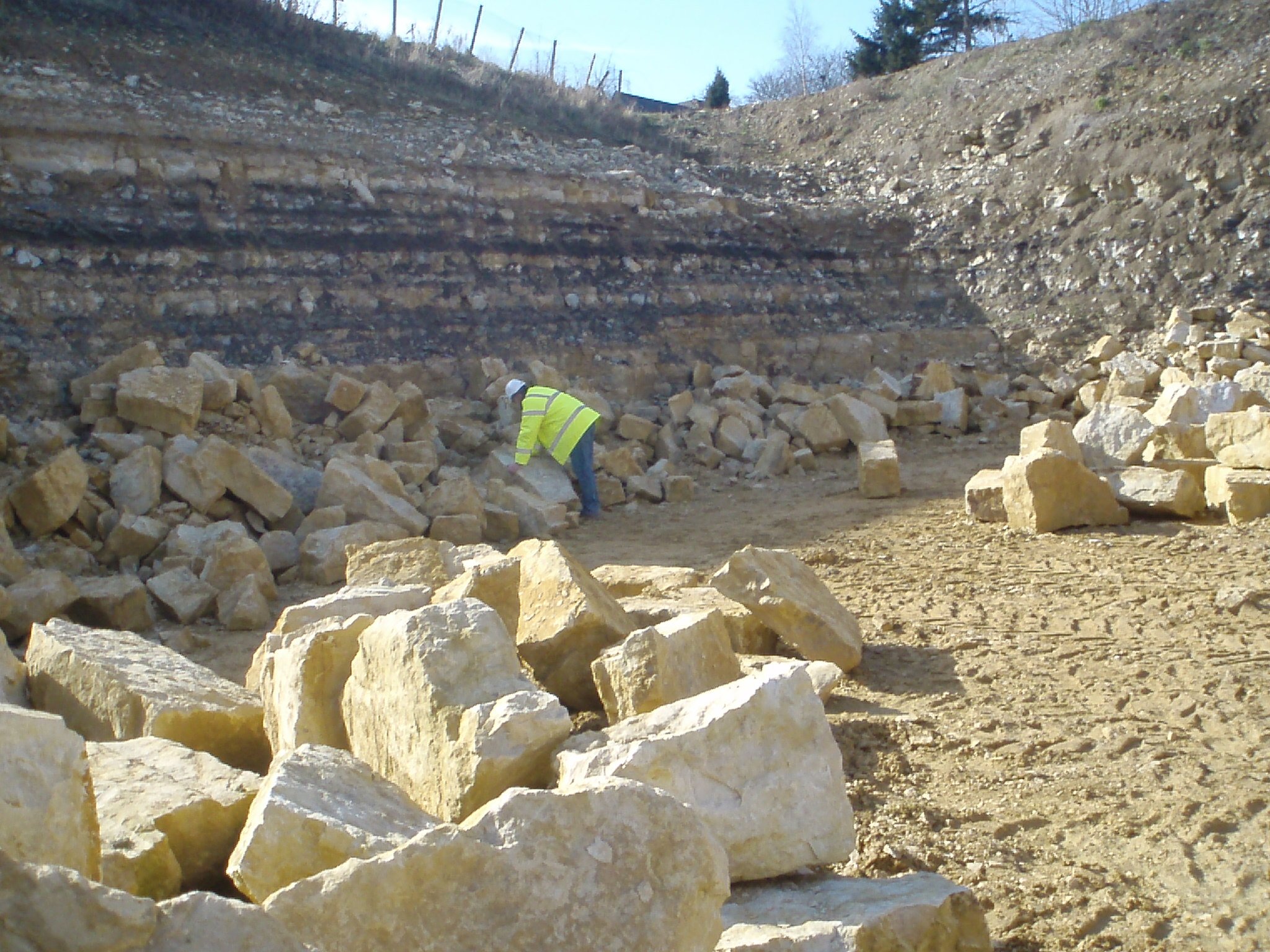Rescheduled!
Lincolnshire Limestone, Lincoln Stone and Lincoln Cathedral
it’s a family affair!
We are pleased to inform you that the 2-day field trip to Lincoln Cathedral and the Lincolnshire Limestone
of Central Lincolnshire
has been rescheduled for the 24-25th September
All participants are requested to register for this event through Eventbrite on the links below, this includes participants who had previously contacted our General Secretary for the original trip.
If you wish to attend BOTH days then please register for each day using the separate links.
During the past several years Lincoln Cathedral has been undergoing a major phase of restoration work alongside the development of a new Visitor and Exhibition Centre on its North Side as well as fulfilling the routine restoration programme. These work commitments, along with the decommissioning of the Cathedral’s Dean and Chapter Quarry in 2021, prompted a review of the building stones used by the Cathedral and their possible replacement when existing stocks become exhausted. As the old quarry had supplied the Cathedral with the bulk of its replacement stone since 1872 the 2020s presents a whole new challenge for the Cathedral’s Works Department, not least because the demands of the Cathedral’s fabric are diverse ranging from simple dimensional building stone to that which meets the needs of masonry and carvings in a variety of sub-environments captured in a major monument standing proud of its surrounding landscape. For context, Lincoln Cathedral’s construction started in 1072 and is the only English cathedral to rest on the stone from which it is built: the Middle Jurassic (Bajocian) Lincolnshire Limestone Formation. The routine restoration cycle of the Cathedral is 100 years consuming c. 28 tons of usable stone whilst the North Side development used an additional 26 tons of stone in 2019-20.
The field trip will commence with a guided tour of the Cathedral and its building stone fabric characterising the dominant stone: Lincoln Stone, which has two variants, Silver and Red, and identifying other, subordinate stones from the Lincolnshire Limestone that have been used historically and currently. The make-up of the Lincoln Stone variants will be compared with that of the more famous Ancaster building stones to show how their contrasting characteristics are a direct function of their depositional origin and how this is the driver for any replacement stone source the Cathedral may choose to utilise in the future.
Nerina
Fieldtrip Programme - Leader: Dr. Mike Ashton
Saturday 24th September
10am Gather at the main West Entrance Door to the Cathedral
10-10.15am Welcome and brief introduction to the day
10.15-11.30am Guided tour of the Cathedral with insights to the fabric
11.30-12.30pm Short talks (c. 20 mins) on the geology of the Lincolnshire Limestone to be visited (Mike Ashton) and the use of LIDAR in Geoconservation (Mark Williams of MapTech)
12.30-1.30pm Lunch in the Cathedral’s Visitor Centre
2.00pm Assembly at Greetwell Long Hollow Quarry, Lincoln (TF003721; travel instructions will be provided)
2.15-5.00pm The Lincolnshire Limestone succession of Lincoln - this magnificent exposure will demonstrate the contrasting make-ups of the Lower and Upper Lincolnshire Limestone and discuss their contrasting depositional origins as well as critical building stone attributes such as bed height (and its prediction). Much of this succession was replicated in the Cathedral’s Dean and Chapter Quarry.
5.15pm Return to central Lincoln
7.00pm Dinner
Sunday 25th September
Travel to Dunston Quarry (TF053634) - on a Sunday morning this should be about 30 minutes from the Cathedral
10-11.30am Dunston Quarry to compare the Lower Lincolnshire Limestone succession with that at Greetwell and discuss the significance of the correlation for the development of the Lincoln Stone. A briefing on the route to be followed to Leadenham will be given before departure. Travel to Leadenham via Boothby Graffoe (travel instructions will be supplied - <30 minutes); the route takes in critical landscape features for appreciating the stratigraphy of the Lincolnshire Limestone in the central area of the county.
12-12.45pm Lunch at Leadenham Travel to Glebe Quarry, Wilsford Heath (SK 992409) near Ancaster (travel instructions will be supplied; <30 minutes)
1.15-4.00pm Glebe Quarry, Wilsford Heath. This quarry is currently the main source of Ancaster Building Stone with current products being Ancaster Hard White (Ancaster Freestone level) and Ancaster Weatherbed (Ancaster Rag level). There will be an introduction to the building stone extraction process by the quarry owner as well as the opportunity to examine both of these rock types and compare them with Lincoln Stone. The challenges of the depositional setting and stratigraphical relationships of the Ancaster Stones will be discussed and an overall model for the Lincolnshire Limestone outlined, along with the nomenclature of these building stones through time.
4.00pm Disperse
Safety.
All the usual PPE is expected by the quarry owners - hard hats, high vis gilets and sturdy footwear. The quarries may be extremely muddy if there has been recent rain so wellingtons, preferably with hard toe-caps, might be preferred. Time for changes of footwear during the trip has been built into the programme schedule.


